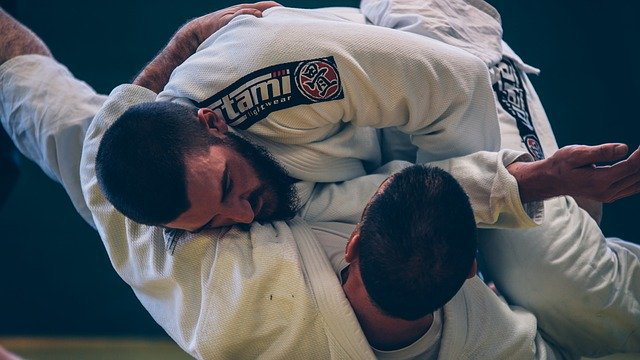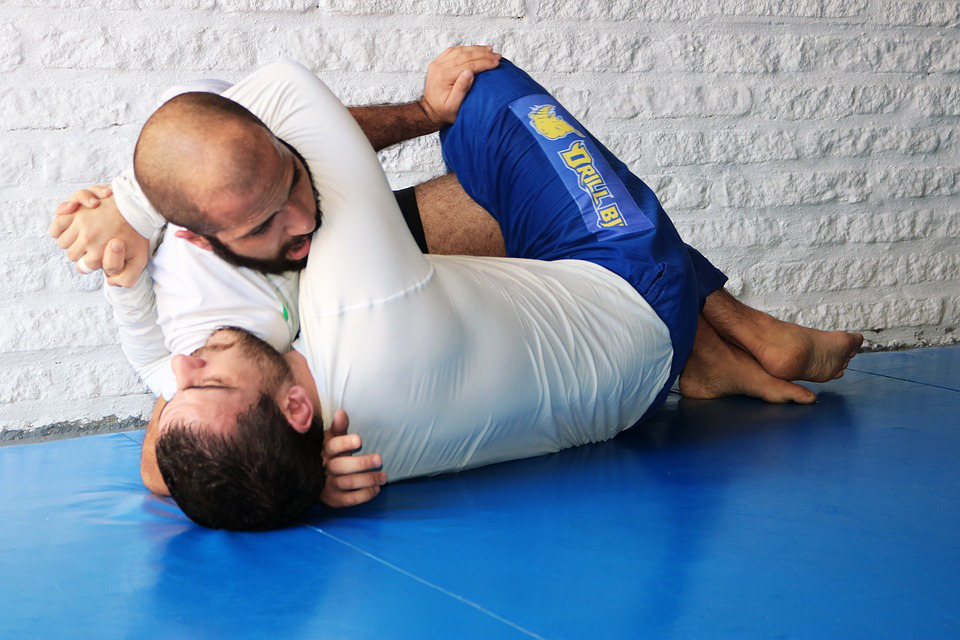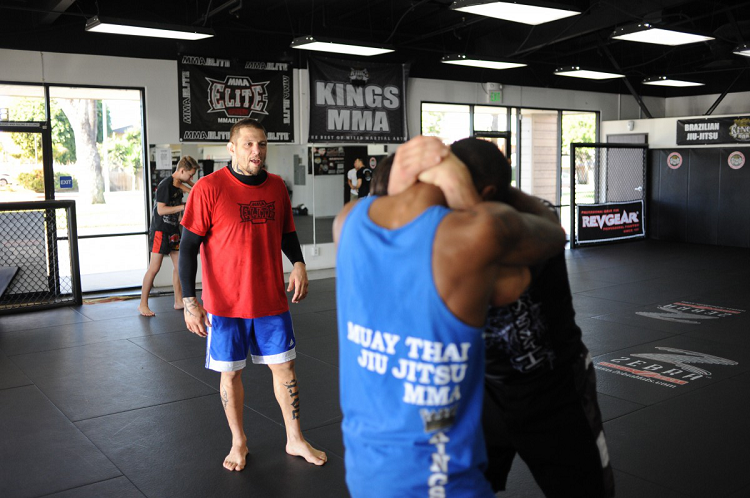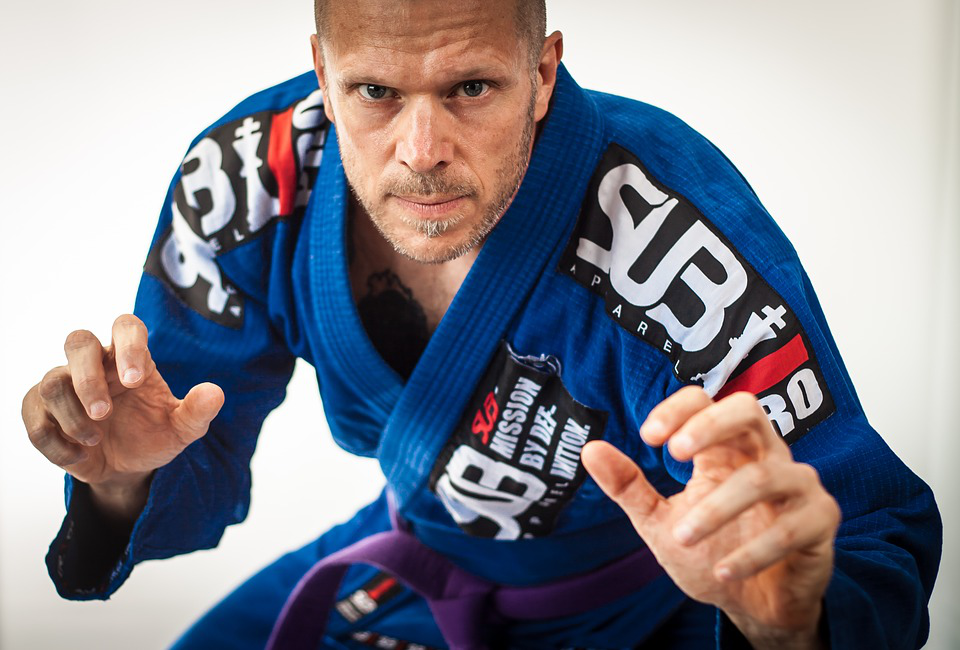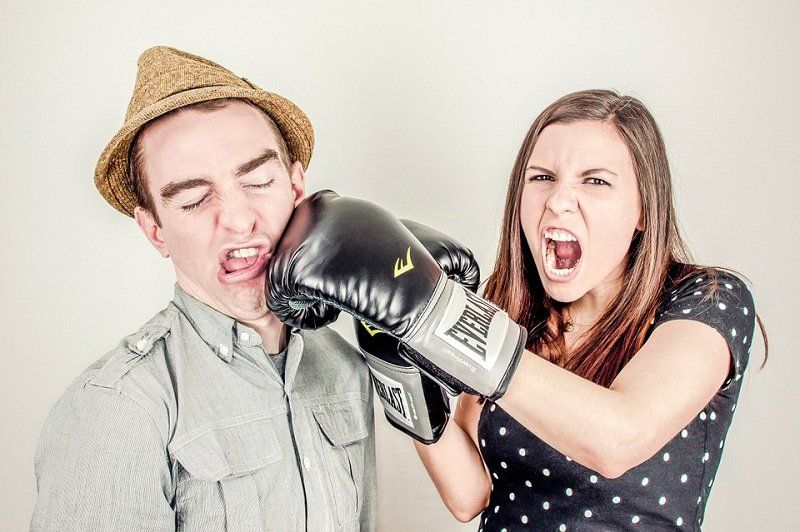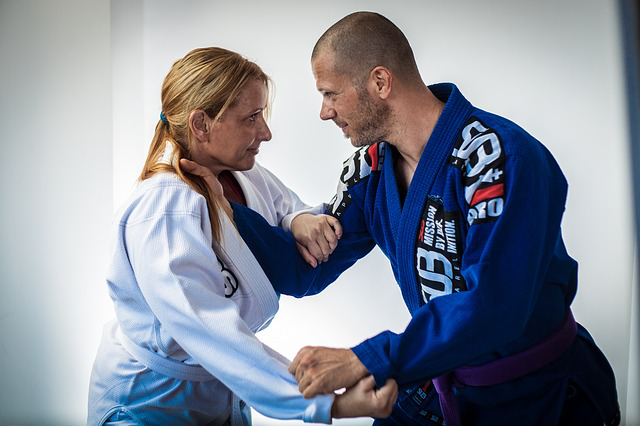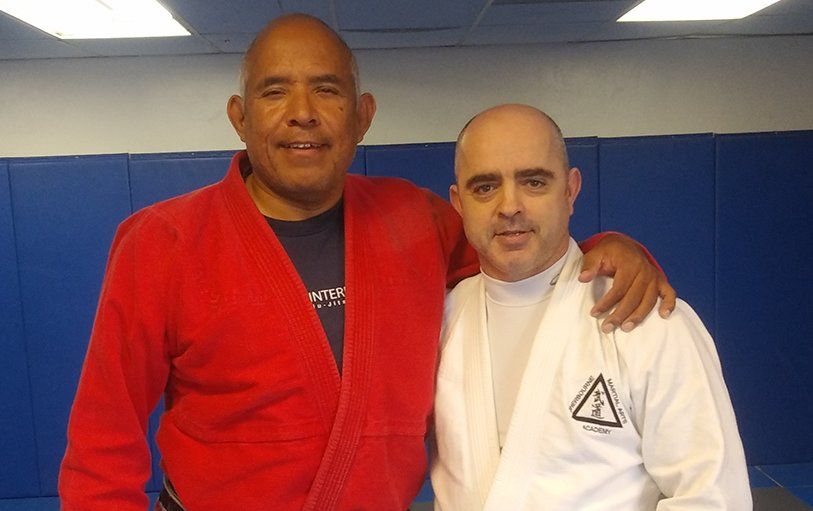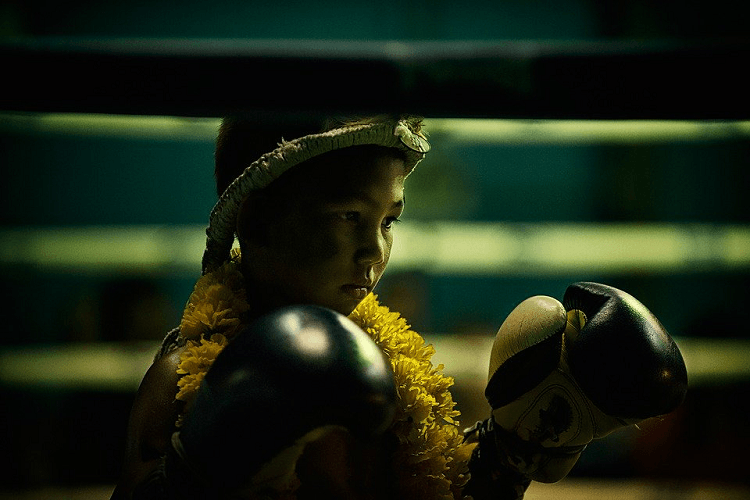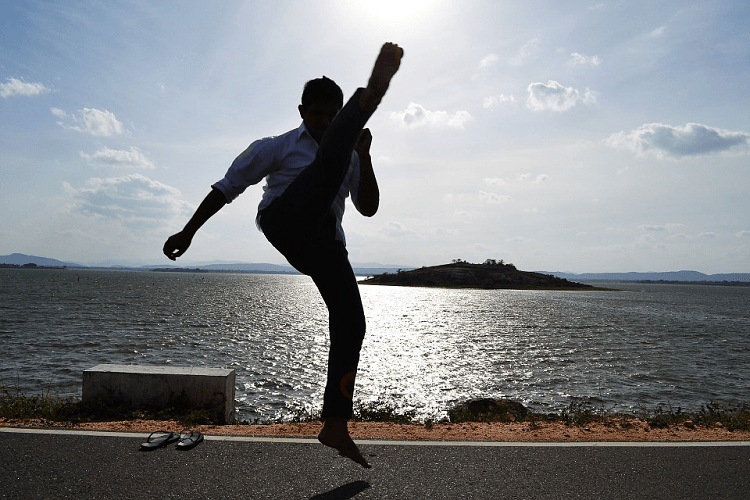Learning and Teaching Jiu Jitsu under Roy Harris
(Harris International)
In a prior 2018 blog I discussed the importance of applying a proper educational format to training in the martial arts - one that embraces a scaffolded learning approach that also teaches students to adopt the proper mindset.
Our model at SMAA not only builds upon recognized educational formats designed to increase the efficiency and effectiveness of knowledge transfer, we also relentlessly seek the most modern and up-to-date methods that can be used to reach our audience. For example, we embrace the use of online training/evaluation formats and continually seek new ways to use technology to our advantage. One of these new methods on the horizon is the use of smartphone apps as a ready information-access tool, and an aid to our educational formats. Apps are slowly making a foray into the martial arts scene as a new and exciting tool. I have seen these tools offered by some prolific and well-respected martial arts instructors, such as Karate instructor Ian Abernathy in the UK, and I have recently learned that the launch of one of the first BJJ smartphone apps is on the horizon and will be offered by legendary BJJ instructor, Roy Harris.
First, I want you to know that I have searched the world over for a match to my values and aspirations with regard to learning Jiu Jitsu (Newaza). I have trained with many world class BJJ, MMA, Karate, Kobudo, and Self-Defense Competitors and Instructors in my lifetime. In 2018 I had the pleasure of meeting and training with Roy Harris who has now become my Jiu Jitsu instructor. Of all the martial arts instructors I have trained with, few compare to Professor Harris in their personal consideration of student needs, knowledge imparted, and organization of content regarding these instructional attributes. In addition, Professor Harris is one of the most honest and trustworthy individuals I have met in my Jiu Jitsu journey, and his integrity is known throughout the BJJ and broader martial arts community - you will find frequent mention of his quality on many martial arts blogs that attest to his integrity as a person, and a martial arts instructor.
Many of you may not know who Roy Harris is in the world of Jiu Jitsu, but in summary, he is a prolific martial artists and early pioneer in the Jiu-Jitsu movement that swept North America over the past 25 years. He was also generally considered as one of the first dozen recipients of a BJJ black belt in the U.S. (the so-called “Dirty Dozen” group). He is a former student of the Gracie Academy in Torrance, where he first studied under Rickson, Royler, and Royce Gracie. He received many private lessons from Royler while at the academy, and it was Royler Gracie that awarded Mr. Harris with his Jiu Jitsu Blue Belt in the early 1990s.
Professor Harris eventually left the Gracie Academy, but continued to train under Rickson Gracie, and also under Nelson Monteiro, and the legendary Machado brothers. After training with many BJJ legends, Professor Harris eventually found his path leading to Joe Moreira, who embraced him as a student through his progression to purple belt in 1994, brown belt in 1996 and first degree black belt in 1998.
Professor Harris competed frequently as a young BJJ student, and would ultimately meet his former instructor, Jean Jacques Machado, in competition at Joe Moreira's Black Belt Challenge in 1998 (a match that continues to be legend in the BJJ community). Although Machado won on points, the match went the distance and he failed to submit his former student (a man that had been a blue belt only 5 years earlier, in 1993).
Professor Harris currently holds a 6th Dan in BJJ under Professor Moreira, and he continues to work and perfect his Jiu Jitsu instructional methodologies, traveling the world to conduct seminars and spread his knowledge. During his training and rise through the BJJ ranks, Professor Harris found that jiu jitsu politics often stood in the way of progression and effective education. School rivalries also tend to stand in the way of effective transmission of knowledge as “rivalry” and “loyalty” are often embedded (sometimes to a fault) in the historic method of coaching BJJ.
Professor Harris does NOT embrace this political rivalry in his teachings, and his experiences (both positive and negative) during the course of his journey have fueled his desire to reach students in a better, and more efficient format designed for the 21st century practitioner - a format that promotes proper educational format and safety above all else.
What was amazing about my first encounter with Professor Harris was how he formulated his training in this preferred educational format, occasionally drawing criticism of other professionals in the BJJ community for his continued focus on certified curricula for learning and progression. He strives to develop standardized training formats that approach subject matter using a scaffolded method of progression-learning, and is known as one of the first BJJ instructors to publicly publish a formal testing criteria for jiu jitsu, formalizing his promotion tests from white belt to black belt. Mr Harris has also been a prolific advocate of online training formats that have often drawn the ire of the Jiu Jitsu community.
As an elementary school teacher (for more than 20 years), student of Jiu Jitsu and as a life-long martial artist, I posed the following questions to Professor Harris in order to more fully understand what sort of journey I am on with him as my teacher.
Can you explain how you teach the concepts and techniques of Jiu Jitsu?
“I like to compare learning Jiu Jitsu to learning math. It begins with counting for 1 to 1000, and progresses from this foundation to arithmetic, algebra, geometry, trigonometry, calculus, and so on. I believe that learning and teaching Jiu Jitsu follows a similar process to learning and teaching mathematics”
What mindset do I need to maintain, in order to grow my Jiu Jitsu?
“Your speech and actions come from your mindset...So, the first mindset I subscribe to is: Safety, above all else! Jiu Jitsu is a very powerful martial art, therefore it needs to be wielded with prudence, not disregard or lack of consideration. Often when I relate this to some students, they reply saying, “ya, ya, ya, what’s next?”. It is very important for students and instructors to understand and demonstrate that they appreciate this mindset for the benefit all those training at the Academy.
What does this mean, and look like?
“It means that you treat your partner like your favourite Aunt/Uncle or Grandmother. It means that you always respect them and consider their needs and abilities. They are not training with you to be treated like a piece of meat for you to get your skill set with. I think this sort of awareness and etiquette are the most important aspects of training an instructor can teach to beginner level students.”
What martial art do you recommend for children?
“For children I recommend Japanese Karate, because it facilitates mental, emotional and physical discipline. The martial values of honor, respect and consideration instilled in children will stay with them for life. Learning to respect Sensei, their training partners and the training environment are very important for their social-emotional growth on and off of the mats. Jiu Jitsu is an adult concern”
You have identified and explained what “Safety First” means and looks like. What is the next aspect of Jiu Jitsu people should focus on?
“The second mindset is: Enjoyment for everyone.
What does this mean, and look like?
“If you are a colored belt, or over 200 lbs, I believe the students should ask their training partners for permission to go hard with them in sparring. At my old academy I had a rule for this: If you are a purple, brown, or black belt and, or you weigh over 200 lbs, you have to ask for permission to spar hard. Without these mindsets there will be a higher probability and eventuality of injuries than are necessary because students will not know how to wield their power prudently. Their unrefined mindsets will tend to focus on control, domination, and tapping. While these unrefined mindsets are great for fighters, they’re not so good for the general public who desire a challenging workout mixed in with some enjoyment and camaraderie.
These are the first two mindsets I teach to students who start training with me.”
This is quite rational and makes sense. It also provides for a greater sense of community and security for all involved. What do you proceed to next when teaching Jiu Jitsu?
“After mindsets, I teach positioning. How the student positions themselves before they execute a technique determines how much force or strength they will use. Better positioning results in less force/effort required. Conversely, when positioning is poor, speed and strength will always fill the gaps.
Next, I teach fundamental movements like: the bridge, the shrimp, throw the legs and sit up, and standing in base.
NOTE: Positioning focuses on what a student does statically (not moving), and fundamental movements teach the student how to move properly.
Next, I teach students postures, and what they should do with their arms, legs, and head to take leverage away from their training partners.
Afterward, I teach grips and grip fighting, and finally, I introduce students to techniques because all of the above lays the foundation for the techniques.
This is how I introduce new students into the world of my Jiu Jitsu. And, this introduction is what separates me from all of the other instructors.”
As an educator the parts that resonate most are his commitment to creating a healthy learning community, and the analogy comparing learning Jiu Jitsu to learning mathematics. Fluency and flexibility in any field, whether it be mathematics, language, education, medicine, law, carpentry, etc. depend on your understanding of the fundamentals. Fluency and flexibility are then improved through the application of the basics over time, with the aid of a skilled instructor/ mentor providing timely feedback to raise the bar.
In my humble opinion, this Q and A session with Professor Harris demonstrates his exemplary: passion for Jiu Jitsu and martial arts, knowledge of the field, as well as, his understanding and respect the learning-teaching process. Not to mention, his candid and willingness to discuss processes and concepts that are rarely, if ever disclosed. I look forward to sharing more of my learnings from Mr. Harris with you in the future regarding the systems and structures he has in place to help demystify the process of learning Jiu Jitsu and belt requirements.
Currently Mr. Harris is putting the finishing touches on an Instructional Jiu Jitsu app titled: “30 Days To A Better Americana”, which will reveal many more details than I can include in a short blog. The app will be available in the iTunes Store in early February.
